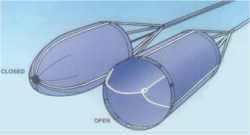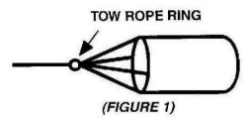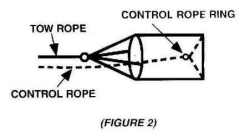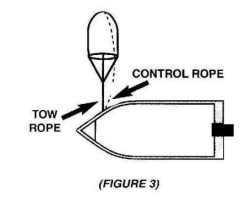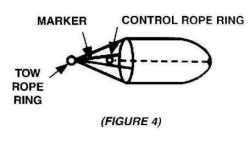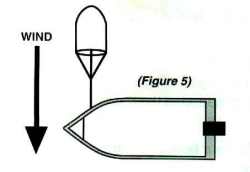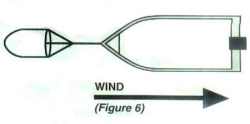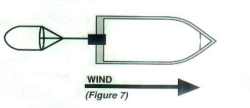 |
|||||||||||||
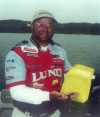
Click here to Check out the New Leech Tamer and order online Promotional Team Favorites Lodging food and more 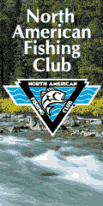
|
By TED TAKASAKI and SCOTT RICHARDSON Bass anglers may get away with using boats solely as casting platforms.
But, walleye fishermen must learn to control boats like cowboys use horses.
Both must work in partnership to achieve success.
When drifting over a shallow breakline with the wind blowing along it, turn the boat perpendicular to the break and use the electric motor to move forward and back to control your depth. The procedure works on spots ranging from shallow points and weedlines to humps far out in the lake. It can be used while Lindy rigging or jigging with Fuzz-E-Grubs. It also works while dipping Thill floats rigged slip-style in conjunction with livebait on plain hooks or small jigs. The sonar’s transducer should be mounted on the trolling motor. Make sure the sonar’s screen is large and easy-to-read. "I want to know what is right below my feet, not what is 17 or 18 feet to the rear," Anderson said. Use a drift sock if the wind pushes you too fast. Anderson’s company, Drift Control Sea Anchors, manufacturers two types of drift socks (fixed and adjustable). The fixed sock comes in 40-inch, 50-inch and 60-inch sizes. The smaller one fits crafts 14 feet and below. The mid-size works for boats 15 to 18 feet. The largest size is made for boats 18 feet and longer. The adjustable sock can be changed to meet conditions. When strong winds blow, Anderson deploys a drift sock on the windward side from a cleat close to the bow in order to slow the boat down while drifting over a break or weedline. Some pros use two socks, a larger one from the bow (because the wind pushes the bow like a sail) and a smaller one nearer the stern to equal out the drift speed from front to back. That keeps the boat moving straight so your partner’s bait presentation is precise. If using an adjustable sock, open it about half way for the first pass. Drift quickly with rigs or jigs using the electric motor to change depth while searching for active fish. At the same time, keep an eye on your the sonar screen while looking for subtle changes in the shape of the structure or weedline and bottom content. Key areas that hold fish are transitions from hard to soft bottoms or where gravel is interspersed with bigger rocks. After covering the spot once, motor back to the beginning of the drift and close the sock to slow the speed for the second pass. Let the fish tell you what speed they want. In addition, pay attention to the line angle as it enters the water. This allows you to return to the speed that is producing fish. Boat control in open water with strong wind and waves can be brutal, but manageable. Start on the downwind side of the structure. Start the gasoline kicker motor on the transom and put it in gear just fast enough to stay stationary. Use the electric trolling motor on the bow to move forward and to steer while making subtle "S" turns over the break to change depth. Once the spot is covered, turn the boat sideways and drift back using a drift sock to slow your progress. Track your path with a GPS. If no fish take your bait on the second pass, move to another area of the structure and repeat the procedure. To back-troll in rough water, try tying a drift sock on a short 4 foot piece of rope to the bow eye and use the gasoline kicker motor to make "S" turns over the break. The drift sock keeps the bow from swinging too much so your partner in front can fish effectively. In really rough conditions, Anderson has even back-trolled successfully from the console using his Mercury Opti-Max 225.
Anchoring is another alternative for precise boat control. Anderson carries two anchors, a water spike and a 28-pound navy anchor and 200-feet of line. Motor upwind beyond the structure and set the anchor. In moderate wind, let out 50 to 70 feet of rope and attach it to the bow eye. Fish that spot. If nothing, simply move the rope to one of the bow cleats and repeat. Still nothing? Move it to the other side. Each time the rope is moved, the boat swings to a new location. Anderson adds grabbers on each side of the bow between the cleat and the bow eye for even more places to tie the rope. Still nothing? Let out more rope and repeat. The tactic works best with slip-float rigs coupled with 1/16th-ounce Fuzz-E-Grubs and live bait. Focus on boat control. It’s the key to enjoy your own walleye round-up! Fish Clix Banner Exchange Please visit these site sponsors |
||||||||||||
|---|---|---|---|---|---|---|---|---|---|---|---|---|---|

